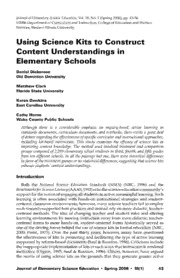
Non-Commutative Stochastic Independence and Cumulants PDF
Preview Non-Commutative Stochastic Independence and Cumulants
Non-Commutative Stochastic Independence and Cumulants Sarah Manzel∗ 6 1 Michael Schu¨rmann∗ 0 2 Department of Mathematics and Computer Science b University of Greifswald e F Walther-Rathenau-Straße 47 5 17487 Greifswald, Germany 2 ] February 26, 2016 A O . h t a Abstract m In a central lemma we characterize ‘generating functions’ of cer- [ tain functors on the category of algebraic non-commutative probabil- 2 ity spaces. Special families of such generating functions correspond to v 9 ‘unital, associative universal products’ on this category, which again 7 define a notion of non-commutative stochastic independence. Using 7 6 the central lemma, we can prove the existence of cumulants and of 0 ‘cumulant Lie algebras’ for all independences coming from a unital, . 1 associative universal product. These include the five independences 0 (tensor,free,Boolean,monotone,anti-monotone)appearinginN.Mu- 6 rakisclassification,c-freeindependenceofM.Boz˙ejkoandR.Speicher, 1 : the indented product of T. Hasebe and the bi-free independence of D. v i Voiculescu. We show how the non-commutative independence can be X reconstructed from its cumulants and cumulant Lie algebras. r a 1 Preliminaries Vector spaces will be over the field of complex numbers. Algebras will be complex associative. An algebra is called unital if it has a unit element. ∗The authors acknowledge support by DAAD and MAEDI/MENESR through the PROCOPE programme. 1 An algebra with an involution is called a ∗-algebra. A positive, normalized linear functional on a unital ∗-algebra is called a state. We say that a linear functional ϕ on a ∗-algebra A is strongly positive if the linear functional ϕ on (cid:101) A(cid:101)is a state where ϕ(1) = 1 and where A(cid:101)= C1⊕A denotes the unitalization (cid:101) of A. Let V be a vector space. The tensor algebra over V is the vector space ∞ (cid:77) T(V) = V⊗n n=1 whereV⊗n denotes then-fold tensor product ofthe vector spaceV with itself. The multiplication of T(V) is given by linear extension of (v ⊗...⊗v )(w ⊗...⊗w ) 1 n 1 m = v ⊗...⊗v ⊗w ⊗...⊗w . 1 n 1 m The algebra T(V) is characterized by the following universal property. For every algebra A and linear mapping R : V → A there is a unique algebra homomorphism T(R) : T(V) → A such that R = T(R)◦ι where ι denotes the canonical embedding of V = V⊗1 into T(V). Similarly, the symmetric tensor algebra S(V) ∞ (cid:77) S(V) = V⊗sn n=0 over V is defined where now we put V⊗s0 = C and where V⊗sn denotes the n-fold symmetric tensor product of V with itself. The commutative unital algebra S(V) is characterized by its universal property, which says that for each commutative unital algebra A and each linear mapping R : V → A there is a unique unital algebra homomorphism S(R) : S(V) → A such that R = S(R)◦ι. Notice that with our notation S(V) is unital whereas T(V) is not. Let I be a non-empty (index) set. Denote by A(I) the set of all finite sequences ε = (ε ,...,ε ), n ∈ N, where ε ∈ I with ε (cid:54)= ε , j ∈ [n−1]. 1 n j j j+1 Write |ε| = n. We put [m] := {1,...,m} and A := A([m]) for m ∈ N. m For vector spaces V , i ∈ I, we call the vector space i (cid:71) (cid:77) V := V , V = V ⊗...⊗V (1.1) i ε ε ε1 εn i∈I ε∈A(I) 2 the free product of the vector spaces V . For algebras A , i ∈ I, the vector i i (cid:70) space A is turned into an algebra, the free product of the algebras A , i∈I i i if we define the multiplication by (a ⊗...⊗a )(b ⊗...⊗b ) 1 n 1 m (cid:26) a ⊗...⊗a ⊗(a b )⊗b ⊗...⊗b if ε = ρ = 1 n−1 n 1 2 m n 1 a ⊗...⊗a ⊗b ⊗...⊗b if ε (cid:54)= ρ 1 n 1 m n 1 for ε,ρ ∈ A(I), ε = (ε ,...,ε ), ρ = (ρ ,...,ρ ), a ⊗ ... ⊗ a ∈ A , 1 n 1 m 1 n ε b ⊗...⊗b ∈ A . For an algebra A we put 1 m ρ (cid:71) A(cid:116)I := A , A a copy of A. (1.2) i i i∈I Let A be an algebra. We say that the (A(1),...,A(m)), m ∈ N, is free in A if A(1),...,A(m) are subalgebras of A and if the algebra homorphism from A(1) (cid:116)...(cid:116)A(m) to A which is given by A (cid:51) a ⊗...⊗a (cid:55)→ a ...a ∈ A ε 1 n 1 n is injective. If this mapping is a bijection, we say that (A(1),...,A(m)) freely generates A. In this case, we also write A = A(1) (cid:116)...(cid:116)A(m). For a non-empty set X we denote by (cid:104)X(cid:105) the semi-group freely generated byX andby[X]thecommutative monoid freelygeneratedbyX. Noticethat, with our notation, (cid:104)X(cid:105) does not include the empty word whereas [X] does. The elements of (cid:104)X(cid:105) are formal words x ...x , k ∈ N, x ∈ X, which are 1 k i calledmonomials. Themonomialsof[X]willsometimesbewrittenx ·...·x , 1 k k ∈ N with N = N∪{0}. We will deal with monomials of [(cid:104)X(cid:105)], which are 0 0 of the form M ·...·M , l ∈ N , with M = x ...x , i ∈ [l], k ∈ N. We 1 l 0 i i,1 i,ki i put set(x ...x ) = {x ,...,x } 1 k 1 k and |x ...x | = k. 1 k For a set X denote by CX the vector space with basis X and by C(cid:104)X(cid:105) the ‘semi-group algebra’ of (cid:104)X(cid:105), i.e. the vector space with basis (cid:104)X(cid:105) and algebra multiplication given by the bilinear extension of the multiplication of (cid:104)X(cid:105). Then T(CX) ∼= C(cid:104)X(cid:105) in a natural way. Similarly, the (commutative, unital) polynomial algebra C[X] will be considered. We have S(CX) ∼= C[X]. We will also use the natural identifications S(V ⊕V ) = S(V )⊗S(V ) (1.3) 1 2 1 2 3 and T(V ⊕V ) = T(V )(cid:116)T(V ). (1.4) 1 2 1 2 Let V∗ denote the algebraic dual space of a vector space V. For ϕ ∈ V∗ we have the scalar-valued algebra homomorphism S(ϕ) : S(V) → C, and we say that a mapping F : V∗ → C is a polynomial function over V if there is an element P ∈ S(V) such that F(ϕ) = S(ϕ)(P) for all ϕ ∈ V∗. In fact, the polynomial P = P is uniquely determined by its polynomial function F F. If {v |i ∈ I} is a vector space basis of V, then we can identify S(V) and i C[{x |i ∈ I}] and we have S(ϕ)(P) = P((ϕ(x ) ), that is S(ϕ)(P) is the i i i∈I value of the polynomial function given by P at the ‘point’ (ϕ(x )) . i i∈I Let V and W be vector spaces and d ∈ N. Frequently, we use the identi- fications Hom (Vd,W) = (cid:0)Hom (V,W)(cid:1)d = Hom (V,Wd). C C C For example, Tv = (T(1)v,...,T(d)v) ∈ Wd or T(v(1),...,v(d)) = T1)v(1) + ...+T(d)v(d) ∈ W for (T(1),...,T(d)) ∈ (cid:0)Hom (V,W)(cid:1)d,v,v(1),...,v(d) ∈ V. C Put X := {x ,...,x }, the set formed by n ∈ N ‘indeterminates’ x ,...,x . n 1 n 1 n Given n ∈ N elements a ,...,a of an algebra A we let 1 n j(a ,...,a ) : C(cid:104)X (cid:105) → A 1 n n be the algebra homomorphism defined by putting j(a ) = x , i ∈ [n]. i i Considering C(cid:104)X(cid:105) = T(CX) we have that j(a ,...,a ) = T(R) 1 n with R : CX → A linear, R(x ) = a . Put (d ∈ N) i i V∗d := (V∗)d = V∗ ⊕...⊕V∗ = (V ⊕...⊕V)∗ = (Vd)∗ and write ϕ◦j for (ϕ(1) ◦j,...,ϕ(d) ◦j) ∈ W∗d if ϕ = (ϕ(1),...,ϕ(d)) ∈ V∗d where V, W are vector spaces and j : W → V is linear. 4 The polynomial algebra C[(cid:104)X(cid:105)] in the indeterminates M, M ∈ (cid:104)X(cid:105), is an N -graded algebraif we putthe degree|M ·...·M |of a monomial M ·...·M 0 1 l 1 l in [(cid:104)X(cid:105)] equal to |M |+...+|M |. For a finite set X, #X = n, denote by 1 l M(X) the set of all monomials in C[(cid:104)X(cid:105)] of the form M ·...·M with 1 l |M ·...·M | = n 1 l (setM )∩(setM ) = ∅ for r (cid:54)= s r s #setM = |M |,r ∈ [l]. r r The set M(X) is formed by all elements of [(cid:104)X(cid:105)] with the property that each indeterminate of X appears exactly once. For example, for X = X , we have 4 that (x x x )·x ,x ·x ·x ·x , x x x x and x ·x ·(x x ) 3 1 4 2 4 1 3 2 2 1 4 3 1 2 4 3 are in M(X) whereas (x x )·x or (x x x )·(x x ) 1 2 4 1 2 4 1 3 are not. Denote by M (X) the set d {(M ,k )·...·(M ,k )|M ·...·M ∈ M(X), (1.5) 1 1 l l 1 l k ,...,k ∈ [d]} 1 l of ‘labelled elements’ of M(X), which is a subset of [(cid:104)X(cid:105)×[d]], and put M(n) = M(X ), M (n) = M (X ). n d d n 2 Introduction Let (C,(cid:12),E) be a tensor category; see, for example, [ML98] or [AM10]. We will always assume that the unit object E is an initial object of the category C. We write 1 : E → A for the unique morphism from E to an object A of A C. Denote by α : A(cid:12)(B (cid:12)C) → (A(cid:12)B)(cid:12)C A,B,C l : E(cid:12)A → A, r : A(cid:12)E → A A A the associativity and unit constraints of the given tensor category, which satisfy the pentagon and triangle diagrams. In this situation the morphisms ι : A → A (cid:12)A and ι : A → A (cid:12)A with 1 1 1 2 2 2 1 2 ι = (id (cid:12)1 )◦r−1 1 A1 A2 A1 ι = (1 (cid:12)id )◦l−1 2 A1 A2 A2 5 arecalledtheinclusionmaps. FollowingU.Franz[Fra06],M.Gerhold[Ger14] andS.Lachs[Lac15], twomorphismsj : A → A, j : A → Awiththesame 1 1 2 2 target are called independent if there is a unique morphism h : A (cid:12)A → A 1 2 such that j = h ◦ ι and j = h ◦ ι . For example, the tensor product (cid:12) 1 1 2 2 is a coproduct for the category C if and only if all pairs of morphisms with the same target are independent. As another elementary example consider the category of vector spaces over a field K with injective linear mappings as morphisms and the tensor product given by the direct sum. Then two morphisms with the same target are independent if and only if there images are linearly independent; see [Ger14]. Now consider the category of duals of probability spaces. The objects of this category are pairs (N,ϕ) with N a commutative von Neumann algebra and ϕ a normal state on N. The morphisms are von Neumann algebra homomorphisms which respect the states. A random variable X : Ω → E over a probability space (Ω,F,P) with values in a measurable space (E,E) gives rise to the morphism j : L∞(E,E,P ) → L∞(Ω,F,P); j (f) = f ◦X X X X where P denotes the law of X. The von Neumann algebra tensor product X andthetensorproductofstatesturnthiscategoryintoatensorcategorywith unit object C, which is an initial object. Two random variables X : Ω → E , 1 1 X : Ω → E are stochastically independent in the usual sense of classical 2 2 probability theory if and only if the morphisms j , j are independent in X1 X2 the above sense. In this paper we will study non-commutative notions of independence, and, in particular, the construction of cumulants associated with such an independence. A natural approach to non-commutativity would be to con- sider the category of von Neumann algebras and states as above without the assumption of commutativity. Then one could ask for possible tensor prod- ucts on this category. The classification of tensor products in this analytic setting seems to be an open problem. There are classification results for a more algebraic approach. Consider the category AlgP with pairs (A,ϕ), A an algebra, ϕ a linear functional on A, as objects, and morphisms given by algebra homomorphisms which respect the linear functionals. The initial ob- ject is given by the algebra {0} and the only linear functional 0 : {0} → C on {0}. Let (AlgP,(cid:12)(cid:48),{0}) be a tensor category and assume that (A ,ϕ )(cid:12)(cid:48) (A ,ϕ ) = (A (cid:12)(cid:48) A ,ϕ (cid:12)(cid:48) ϕ ). 1 1 2 2 1 2 1 2 6 We form a new tensor category (AlgP,(cid:12),{0}) by putting A (cid:12)A = A (cid:116)A 1 2 1 2 ϕ (cid:12)ϕ = (ϕ (cid:12)(cid:48) ϕ )◦(ι (cid:12)(cid:48) ι ) 1 2 1 2 1 2 wherehereι ,ι aretheembeddingsofthealgebrasA ,A intoA (cid:12)(cid:48)A given 1 2 1 2 1 2 by (cid:12)(cid:48) as above. The free product is a coproduct in the category of algebras. The tensor product (cid:12) is a reduction of the tensor product (cid:12)(cid:48) in the sense of [Fra06]. If two morphisms are independent with respect to (cid:12)(cid:48), they are also independent with respect to (cid:12). This means that, for many questions in non-commutative probability, we may restrict ourselves to tensor products of the form (A (cid:116) A ,ϕ (cid:12) ϕ ) where the product (cid:12) of linear functionals 1 2 1 2 satisfies (ϕ (cid:12)ϕ )◦ι = ϕ ; (ϕ (cid:12)ϕ )◦ι = ϕ (2.1) 1 2 1 1 1 2 2 2 (ϕ (cid:12)ϕ )(cid:12)ϕ = ϕ (cid:12)(ϕ (cid:12)ϕ ) (2.2) 1 2 3 1 2 3 (ϕ (cid:12)ϕ )◦(j (cid:116)j ) = (ϕ ◦j )(cid:12)(ϕ ◦j ) (2.3) 1 2 1 2 1 1 2 2 for objects (A ,ϕ ), (A ,ϕ ) and (A ,ϕ ) in AlgP, algebras B , B , and 1 1 2 2 3 3 1 2 algebra homomorphisms j : B → A , j : B → A . Here we put 1 1 1 2 2 2 j (cid:116)j = (ι ◦j )(cid:116)(ι ◦j ). 1 2 1 1 2 2 Products in AlgP which satisfy (2.1)-(2.3) have been completely classified; see [Spe97, BGS02, Mur02, Mur03, GL15]. There are five families of such products, the tensor [HP84], free [Voi85, Spe90] , Boolean [vW73], monotone and anti-monotone [Mur97, Mur01, Lu97] families. In this paper we will consider a more general situation. The category AlgP , d,m ∈ N, has as objects triplets (cid:0)A,(A(1),...,A(m)),ϕ(cid:1) where d,m now A comes with an m-tuple (A(1),...,A(m)) of subalgebras which freely generates A, and ϕ is a d-tuple of linear functionals with each component a linear functional on A. A morphism of AlgP is given by an m-tuple of d,m algebra homomorphisms adapted to the free decomposition of the algebras into subalgebras and which respect the components of ϕ. We consider tensor products on AlgP given by products (cid:12) with (2.1)- d,m (2.3) which now have to be interpreted component-wise. We call such a unital, associative universal product a u.a.u.-product. Now further examples of independences, like bi-freeness [Voi14] or c-freeness [BS91, Ans11] and the examples of [Has11], are included. The classification of u.a.u.-products in AlgP is an open problem. d,m Weareinterestedinconvolutionproducts, momentsandcumulantsinthe non-commutative algebraic setting. To define these notions some additional 7 structure is needed. Classically, convolution of measures on (topological) groupscanbedefinedbyacombinationofthetensorproductoftwomeasures and the group multiplication. Similarly, the convolution of linear functionals on a Hopf algebra or bialgebra is defined. Since we wish to study different notionsoftensorproductsinanon-commutativesetting, weneeddual groups or semi-groups in the sense of D. Voiculescu [Voi87], which better suit non- commutativity than Hopf algebras or bialgebras. A dual semi-group in this paper means a pair (D,∆) with D an algebra and ∆ : D → D(cid:116)D an algebra homomorphism such that (∆(cid:116)id)◦∆ = (id(cid:116)∆)◦∆ (2.4) (0(cid:116)id)◦∆ = ι ; (id(cid:116)0)◦∆ = ι . (2.5) 1 2 For the classification of independences a lemma from [BGS05] is crucial. A generalized version of this lemma and a more detailed proof can be found in Section 4 of this paper. We explain the statement of our central lemma. The universal property of the polynomial algebra T(CX ) = C(cid:104)X (cid:105) can be formulated as follows. n n Given an arbitrary algebra A and n elements a ,...,a in A there is a 1 n unique algebra homomorphism j(a ,...,a ) : C(cid:104)X (cid:105) → A which maps x to 1 n n i a , i ∈ [n]. A mapping F : C(cid:104)X (cid:105)∗d → C from the space C(cid:104)X (cid:105)∗d of d-tuples i n n of linear functionals on C(cid:104)X (cid:105) to the complex numbers is called generating n if the maps (a ,...,a ) → F(ϕ◦j(a ,...,a )) 1 n 1 n are n-linear for all algebras A and all d-tuples ϕ of linear functionals on A. In the special case d = 1 the central lemma says that generating maps are always polynomial functions given by a polynomial P of degree n in the F polynomial algebra C[(cid:104)X (cid:105)] in commuting indeterminates M where M runs n through all monomials of C(cid:104)X (cid:105). Moreover P is of very special type. It n F lies in the linear span of elements of the form M ·...·M with monomials 1 l M in C(cid:104)X (cid:105) such that each indeterminant x ,...,x appears exactly once k n 1 n in M ,...,M , i.e. P is in the linear span of M(X ) of Section 1. F is 1 l n (cid:0) (cid:1) obtained from P by the equation F(ϕ) = P (ϕ(M)) that is by the F F M value of the polynomial function P at the points ϕ(M). For general d ∈ N F the monomials M get a label j ∈ [d] and the d-tuple ϕ puts the value ϕ(j)(M) to the labelled monomial (M,j). Thesamelemmaisusedtodefinethe‘Lachsfunctor’(whichisanexample ofacolaxmonoidalfunctor; seee.g. [AM10]), thecased = m = 1wastreated by S. Lachs in [Lac15]. Fix a u.a.u.-product (cid:12) on AlgP . The convolution d,m product of two linear functionals ϕ , ϕ on a dual semi-group D is defined 1 2 8 by ϕ (cid:63)ϕ = (ϕ (cid:12)ϕ )◦∆. (2.6) 1 2 1 2 The product (cid:12) gives rise to a cotensor (or colax monoidal) functor L from (cid:12) the tensor category (AlgP ,(cid:12),{0}) to the tensor category of commutative d,m algebraic probability spaces with the usual tensor product of algebras and of normalized linear functionals. It associates with each dual semi-group D a bialgebra structure on the symmetric tensor algebra L (D) = S((D(cid:116)m)d) (cid:12) over the vector space (D(cid:116)m)d such that S(ϕ (cid:63)ϕ ) = S(ϕ )(cid:63)S(ϕ ) (2.7) 1 2 1 2 where the second convolution is given by the coproduct L (∆) of the bialge- (cid:12) bra (L (D),L (∆),S(0)) and S(ϕ) denotes the algebra homomorphism from (cid:12) (cid:12) L (D) to the complex numbers given by ϕ ∈ (D(cid:116)m)∗d. If D is a dual group, (cid:12) the vector space (D(cid:116)m)∗d is a group with respect to convolution; cf. [FM15] for the case d = m = 1. Now consider the following example of a dual group which is important forthetreatmentofcumulantsassociatedwithagivenproduct(cid:12)onAlgP . d,m The algebra structure of this dual group is just that of a tensor algebra T(V) over a given vector space V. As before it is sometimes convenient to look at T(V) as the polynomial algebra C(cid:104)x ;i ∈ I(cid:105) in indeterminates x with I i i a set of the cardinality of a basis of V. The dual space of C(cid:104)x ;i ∈ I(cid:105) can i be identified with the algebra C(cid:104)(cid:104)x ;i ∈ I(cid:105)(cid:105) of formal power series in the x . i i The comultiplication of T(V) is given by ∆x = ι x +ι x where ι ,ι denote i 1 i 2 i 1 2 the natural embeddings of V into T(V)(cid:116)T(V) = T(V ⊕V); see 1.4. The fact that the polynomial in the central lemma is of the special type described above means that the bialgebra L (D) in the case D = T(V) is (cid:12) N -graded with a 1-dimensional 0-component. For such N -graded bialgebras 0 0 (which are automatically Hopf algebras; see e.g. [Man08]) linear functionals which vanish at 1 are nilpotent with respect to convolution if restricted to the sub-coalgebra spanned by homogeneous elements of a degree which is bounded by a fixed natural number. Thus we may define, pointwise, the linear functional ln Φ as a logarithm series with respect to convolution for (cid:63) (cid:0) (cid:1) all linear functionals Φ on L T(V) with Φ(1) = 1. It can be shown that, (cid:12) for ϕ ∈ (D(cid:116)m)∗d, D = T(V), the convolution logarithm ln S(ϕ) is an S(0)- (cid:63) derivation. As such it is determined by its restriction ln (ϕ) to (D(cid:116)m)d. We (cid:12) call ln (ϕ) ∈ (D(cid:116)m)∗d the cumulant functional of ϕ. In fact, d = m = 1 (cid:12) gives the known cumulants (see e.g. [AHLV15]) if we choose for (cid:12) one of the Muraki five [Mur02, Mur02, Lac15], and the cumulants in the bi-free case of Voiculescu [Voi14] for d = 1, m = 2. Morever, m = 1, d ≥ 2 covers c- freeness of Boz˙ejko and Speicher [BS91, BLS96] and the examples of Hasebe 9 [Has11]. In the symmetric case, e.g. for tensor, free, Boolean and bi-free independence, we have ln (ϕ (cid:63)ϕ ) = ln (ϕ )+ln (ϕ ) (2.8) (cid:12) 1 2 (cid:12) 1 (cid:12) 2 whereas, for example, in the monotonic or anti-monotonic case this formula has to be replaced by a Campbell-Baker-Hausdorff expansion; cf. [FM15] and Theorem 8.1 of this paper. The uniqueness of cumulants which satisfy natural conditions is shown in [HS11] in the monotonic case. TheCampbell-Baker-Hausdorffexpansionfollowseasily fromthecalculus of formal power series. The linear functional exp Ψ can be defined as an (cid:63) (cid:0) (cid:1) exponential convolution series for all linear functionals Ψ on L T(V) and, (cid:12) if Ψ vanishes at 1, we have that this series is a finite sum at each point. Moreover, it follows that ln and exp are inverses of each other. For an (cid:63) (cid:63) S(0)-derivation D = D(ψ), ψ the restriction of D to (cid:0)T(V)(cid:116)m(cid:1)d = (cid:0)T(Vm)(cid:1)d, we have that exp D is a unital algebra homomorphism and as such of the (cid:63) form S(ϕ) with ϕ ∈ (cid:0)T(Vm)(cid:1)∗d. Put exp (ψ) = ϕ. Then ln and exp are (cid:12) (cid:12) (cid:12) inverses of each other. Moreover, ln (ϕ (cid:63)ϕ ) is the restriction to (D(cid:116)m)d of (cid:12) 1 2 the Campbell-Baker-Hausdorff expansion 1 ln S(ϕ )+ln S(ϕ )+ [ln S(ϕ ),ln S(ϕ )] (cid:63) 1 (cid:63) 2 (cid:63) 1 (cid:63) 2 (cid:63) 2 1 + [ln S(ϕ ),[ln S(ϕ ),ln S(ϕ )] ] −... (cid:63) 1 (cid:63) 1 (cid:63) 2 (cid:63) (cid:63) 12 which again is a finite sum at each point. The convolution commutator of two S(0)-derivations is again an S(0)-derivation. Therefore, the vector space (D(cid:116)m)∗d, D = T(V), becomes a Lie algebra with the Lie bracket defined by [ψ ,ψ ] := [D(ψ ),D(ψ )] (cid:22) (D(cid:116)m)d (2.9) 1 2 (cid:12) 1 2 (cid:63) which we call the cumulant Lie algebra for V. Call the cumulants for V = Cn, n ∈ N, i.e. in the case D = C(cid:104)x ,...,x (cid:105), the n-th order cumulants of (cid:12) and 1 n the associated Lie algebra on (D(cid:116)m)∗d = C(cid:104)(cid:104)x ,...,x (cid:105)(cid:105)d the n-th order 1 mn cumulant Lie algebra of (cid:12). We show that a u.a.u.-product is determined by the following data • all n-th order cumulants, n ∈ N • all n-th order cumulant Lie algebras, n ∈ N . The system of cumulants and cumulant Lie algebras is the infinitesimal form of the underlying u.a.u.-product. It will be a subject of further research to 10
The list of books you might like

The 48 Laws of Power

What Happened to You?

The Mountain Is You

Corrupt (Devil's Night #1)
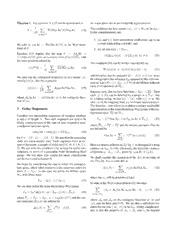
DTIC ADA475667: Finite Heisenberg-Weyl Groups and Golay Complementary Sequences
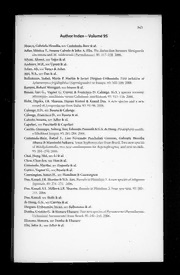
Mycotaxon 2006: Vol 95 Index
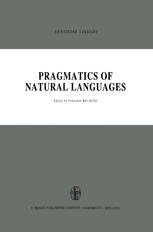
Pragmatics of Natural Languages

Crime Scene Investigation
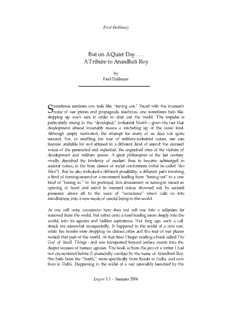
But on A Quiet Day . . . A Tribute to Arundhati Roy
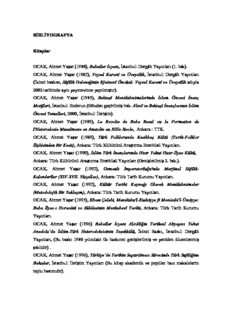
BİBLİYOGRAFYA Kitaplar OCAK, Ahmet Yaşar (1980), Babaîler İsyanı, İstanbul
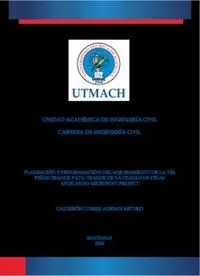
Convert JPG to PDF online
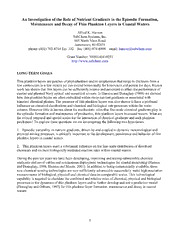
DTIC ADA521776: An Investigation of the Role of Nutrient Gradients in the Episodic Formation, Maintenance and Decay of Thin Plankton Layers in Coastal Waters
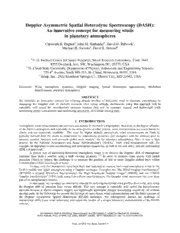
DTIC ADA522013: Doppler Asymmetric Spatial Heterodyne Spectroscopy (DASH): An Innovative Concept for Measuring Winds in Planetary Atmospheres
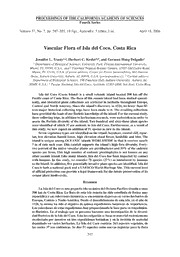
Vascular Flora of Isla del Coco, Costa Rica
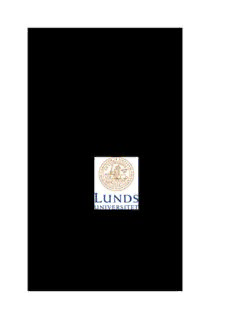
C-uppsats_30 maj
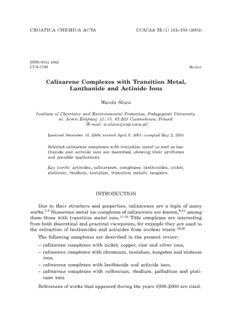
Calixarene Complexes with Transition Metal, Lanthanide and Actinide Ions

Amazon Cognito - 개발자 안내서

C uppsats Joni & Anton rev.2 .docx
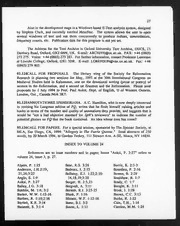
Spenser Newsletter 1993: Vol 24 Index
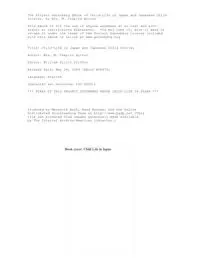
Childlife In Japan And Japanese Child Stories by Mrs M Chaplin Ayrton

Is Australia an Asian Country?
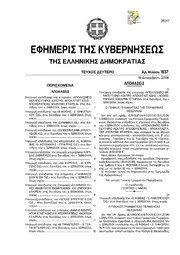
Greek Government Gazette: Part 2, 2006 no. 1837

